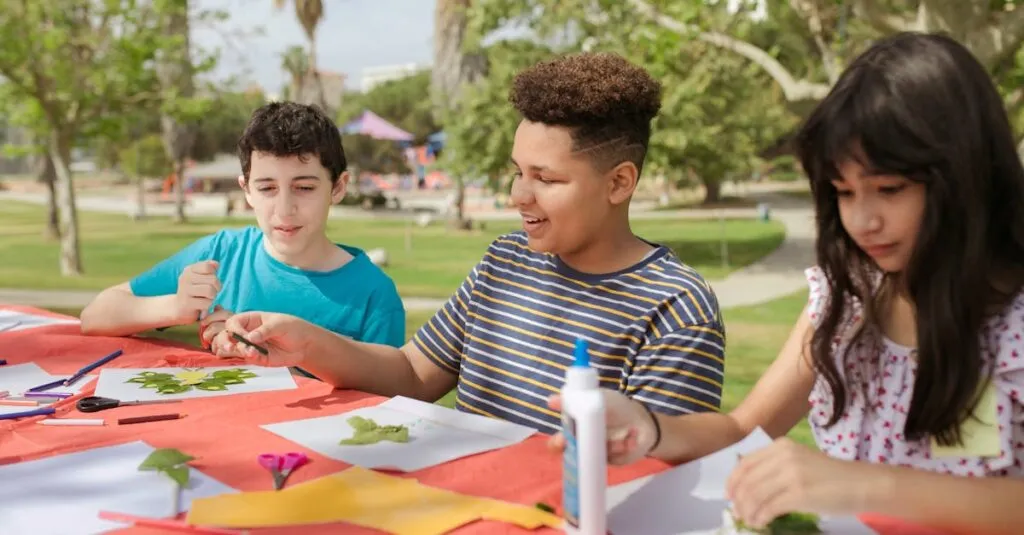Why Ruth and Naomi’s Story Matters in Preschool
Ruth and Naomi’s story beautifully highlights friendship, loyalty, and kinship, providing a captivating narrative for preschoolers. Kids, with their vivid imaginations, easily connect to the vibrant tales of Ruth and Naomi. To them, the story isn’t just about two women; it’s about courage, loyalty, and the magic of friendship.
These concepts resonate deeply with their worldviews. Preschool Sabbath school lessons, therefore, become enchanting worlds where biblical stories come to life. Emphasizing the emotional bonds between Ruth and Naomi fosters empathy and understanding among young learners. It teaches that real strength lies in our relationships, an essential lesson in a child’s social development.
This captivating tale, combined with interactive activities, keeps children engaged and eager to learn more.

Making Lessons Fun and Educational
Incorporating fun into educational lessons can transform the learning process. When lessons are lively, kids are more likely to absorb the content. Including simple games or songs about Ruth and Naomi can be a game-changer. Imagine a room full of preschoolers singing about Ruth’s loyalty in catchy tunes. It can transform a typical lesson into a memorable event.
Making learning fun isn’t just about games; it’s about changing the narrative. Here are some engaging methods to consider:
- Use Puppets: Tell the story with puppets to capture their attention.
- Role-Play: Create a simple role-play where kids act out the story.
- Interactive Songs: Incorporate catchy tunes that reinforce the lesson.
This hands-on experience solidifies their learning while sprinkling a little entertainment into your sessions. Don’t worry if it’s loud—every giggle is a sign of understanding.
Education framed in fun sticks for a lifetime.
Using Crafts to Reinforce Learning
Crafts are a dynamic way to reinforce lessons. A simple craft like making friendship bracelets can symbolize Ruth and Naomi’s bond. These DIY projects, besides being fun, help kids physically interact with the story. It aids in solidifying lessons by associating the story with a tangible object.
Benefits of Crafts in Learning:
- Provides a creative outlet for children, sparking joy and excitement.
- Offers the perfect opportunity for children to showcase what they’ve learned.
- Displaying these crafts can build confidence and a sense of accomplishment.
- Might even become a keepsake that reminds them of the story anytime they see it.
Unlocking Creativity: Creativity opens doors to endless possibilities, turning each lesson into a memorable adventure.

Storytelling Techniques That Work
Effective storytelling can make a world of difference in children’s understanding. Let the kids pull out their Ruth and Naomi puppets and bring the story alive. These tools of imagination animate their pictorial world, making biblical characters relatable and lively.
Telling the story using expressive voices and engaging gestures captures their attention. Adding questions like, ‘What do you think happens next?’ keeps them interactive. Storytelling isn’t just about recounting tales; it’s about creating suspense and anticipation. These elements help make abstract concepts more accessible to preschoolers.
Just remember, keep each part short and sweet to match their attention span. When biblical characters leap off the page, children sit at the edge of their seats eagerly waiting for what’s next.

Dealing with Emotions in Bible Stories
Scripture is a treasure trove of emotions, and preschoolers feel them deeply. Ruth and Naomi’s story highlights emotions like sadness and hope, which can resonate with children. Discussing such feelings with preschoolers encourages them to express and understand their own emotions.
A teacher’s empathy validates a child’s feelings, empowering them to express themselves. Incorporating simple meditation exercises or quiet time helps children process and release these emotions healthily. It’s essential to create a supportive environment for these discussions without overwhelming them.
Simply asking, ‘How do you think Ruth felt?’ opens channels for empathy and conversation. It prepares kids not only for biblical learning but also for real-life emotional challenges they may encounter.

Encouraging Parental Participation
Involving parents in preschool Sabbath lessons enhances the learning experience. Knowledge is better retained when parents engage with their children’s lessons. Guide parents to engage with their children through follow-up activities at home, like:
- Discussing the story at dinner.
- Making a weekly journal where kids can express what they learned.
Parents can bolster these lessons at home, making them a regular part of their conversations. Additionally, family storytelling time strengthens the stories taught at church, ensuring that children see faith as a central part of daily life, not just in Sabbath school.
Invite parents for a storytelling session to see it in action—they’ll likely leave inspired too. Building this bridge between school and home creates a vibrant, learning community.

Building a Spiritual Foundation
The story of Ruth and Naomi can lay a strong foundation for a deep understanding of faith. This narrative of kindness, faithfulness, and God’s providence are key elements of the spiritual growth of little ones.
Help children see these characters as role models, showing godly behavior through everyday life actions. The actions of Ruth and Naomi demonstrate divine love mirrored in human relationships, communicating that biblical truths are not distant but very much part of our lives today.
Encouraging Key Lessons
Encourage children to carry these lessons into their interactions, aiming to embody kindness and loyalty in their playtime and beyond. By building this spiritual foundation early, we arm preschoolers with values they’ll carry well into adulthood, becoming part of their innermost moral compass.

